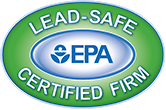Environmental Remediation
Some of the most common hazardous materials found in the environment are petroleum, pesticide, and lead. Developed land is often subjected to pollution due to factories, businesses, and homes. Lead may get into the soil from paint in old houses.
Petroleum products may seep into the soil and ruin the area. Whatever the case, environmental remediation can solve these problems. This type of remediation is important not only for the environment but also for human health.
This is because certain hazardous materials can directly harm your health. But what is environmental remediation and what are its benefits? Keep reading and learn more about how it works below.
Sessler Environmental Services (SES) is a full-service environmental remediation contractor and we are a nationally recognized industry leader for delivering safe, high quality and cost-effective solutions using state-of-the-art equipment.
What You Need to Know About Environmental Remediation
The process of environmental remediation aims to remove certain substances from the environment. These substances are often hazardous and may include contaminated soil, impacted concrete, and polluted groundwater. Sessler Environmental Services (SES) are the experts for environmental remediation projects.
Many homes and businesses may unknowingly rest on contaminated soil, posing a significant risk to human health. Hazardous materials found in contaminated soil can lead to various health problems, including an increased risk of certain types of cancer, damage to internal organs, and the nervous system, resulting in long-term or permanent harm to the body.
These harmful effects become more pronounced with prolonged exposure to these hazardous materials. Moreover, exposure to certain hazardous materials may cause more apparent symptoms such as headaches, rashes, and fatigue. If these contaminants seep into groundwater, they may spread throughout the area, rendering the water dangerous for consumption or use.
To address these issues, it is essential to enlist the services of reliable and competent environmental remediation professionals. They can clean up contaminated soil and eliminate hazardous materials that pose risks to human health.
Remediation efforts are also crucial for protecting wildlife and plant life in the area. By working with the best environmental remediation services, property owners can ensure that their surroundings are free from contamination and pose no risks to their health or the environment.
How It Works
Environmental remediation involves a series of steps that aim to remove or reduce pollution and contamination from soil, air, and water. The specific remediation technique used depends on the type and extent of contamination, as well as the site characteristics.
The first step in environmental remediation is site assessment. This involves evaluating the contamination and determining the extent and severity of the problem. The site assessment includes testing soil, air, and water samples, as well as evaluating the site history and geology.
Once the site assessment is complete, a remediation plan is developed. The plan outlines the remediation strategy, the timeline, and the estimated costs. The remediation plan is tailored to the specific site and contamination, and may involve one or more remediation techniques.
The most common remediation techniques include soil and groundwater remediation, air pollution control, hazardous waste cleanup, water treatment, and carbon sequestration. These techniques involve a range of physical, chemical, and biological processes, such as excavation, pump and treat, chemical oxidation, phytoremediation, and carbon capture and storage.
During the remediation process, the site is monitored to ensure that the contamination is being effectively reduced or removed. Once the remediation is complete, the site is retested to confirm that the contamination has been successfully remediated.
Overall, environmental remediation is a complex and challenging process that requires expertise in site assessment, remediation planning, and implementation. However, the benefits of remediation are significant and can help to create a cleaner, healthier, and more sustainable environment for future generations.
Sessler Environmental Services (SES) is highly trained and experienced on all types of environmental remediation.
Environmental Benefits of Remediation
Reduces Pollution and Contamination
One of the primary benefits of environmental remediation is reducing pollution and contamination. Pollution and contamination can be harmful to human health and the environment, and can cause significant damage to ecosystems. Environmental remediation techniques such as soil and groundwater remediation, air pollution control, and hazardous waste cleanup can effectively reduce pollution and contamination levels, thereby improving the overall environmental quality.
Protects Biodiversity and Ecosystems
Environmental remediation helps to protect biodiversity and ecosystems by removing or reducing the toxic pollutants that can harm plant and animal life. Polluted water, air, and soil can adversely affect the health of ecosystems, leading to species loss and biodiversity decline. Remediation can help to restore degraded ecosystems, thus preserving biodiversity and promoting ecological resilience.
Improves Air and Water Quality
Environmental remediation can also help to improve air and water quality by reducing emissions and contaminants. Remediation techniques such as air pollution control, water treatment, and wastewater management can effectively reduce the levels of harmful substances in the air and water, thus improving the overall quality of the environment.
Mitigates Climate Change
Environmental remediation can play a crucial role in mitigating climate change by reducing greenhouse gas emissions and promoting carbon sequestration. Carbon sequestration techniques such as afforestation, reforestation, and soil carbon sequestration can help to capture and store carbon, thus reducing the concentration of carbon dioxide in the atmosphere.
Economic Benefits of Remediation
Increases Property Values
Environmental remediation can increase property values by removing or reducing contamination and pollution. Properties that have been remediated are more desirable to buyers, and can command higher prices in the real estate market. In addition, remediation can help to attract new businesses and investment to the area, further contributing to economic growth.
Attracts Investment and Development
Environmental remediation can also attract investment and development by improving the overall environmental quality of the area. Clean and healthy environments are more attractive to investors and developers, and can help to stimulate economic growth and job creation.
Reduces Liability and Risk
Environmental remediation can help to reduce liability and risk associated with pollution and contamination. Companies and individuals that are responsible for pollution and contamination can be held liable for the costs of cleanup and damages. Remediation can help to reduce these costs and liabilities, thus reducing financial risk and exposure. Additionally, Sessler Environmental Services (SES) has an EMR well below the industry average.
Saves Costs on Cleanup and Regulation
Environmental remediation can also save costs on cleanup and regulation. Remediation techniques such as pollution prevention and waste reduction can help to reduce the amount of pollution and contamination generated, thus reducing the need for costly cleanup and regulatory measures. In addition, proactive remediation measures can help to prevent pollution and contamination from occurring in the first place, further reducing the need for cleanup and regulatory measures.
Sessler Environmental Services (SES) can assist with all stages of your project; from planning and budgeting, to engineering and execution.
Social Benefits of Remediation
Improves Health and Safety
About 83% of the earth’s land surface has been affected by human activity, which threatens animals and plants in the area. The less polluted an area is, the cleaner it’ll be overall. Any threats to human life in that area have a reduction after clean-up.
Environmental remediation can improve public health and safety by reducing exposure to harmful pollutants and contaminants. Polluted air, water, and soil can pose significant risks to human health, causing a range of health problems such as respiratory illnesses, cancer, and neurological disorders.
Sessler Environmental Services (SES) always places safety as a number one priority on all of our projects, so you can be rest assured that your project will be completed with the utmost care and safety practices, policies and procedures are adhered to.
Enhances Community Quality of Life
Environmental remediation can also enhance community quality of life by improving the overall environmental quality of the area. Clean and healthy environments can promote community well-being and social cohesion, thus enhancing the overall quality of life for residents.
Fosters Environmental Stewardship
Environmental remediation can foster environmental stewardship by promoting awareness and responsibility for the environment. Remediation activities can serve as a platform for educating the public about environmental issues and the importance of environmental protection. In addition, remediation can encourage community engagement and participation in environmental initiatives.
Conclusion
Environmental remediation offers a range of benefits, including environmental, economic, and social advantages. Remediation can help to reduce pollution and contamination, protect biodiversity and ecosystems, improve air and water quality, mitigate climate change, increase property values, attract investment and development, reduce liability and risk, save costs on cleanup and regulation, improve health and safety, enhance community quality of life, and foster environmental stewardship.
By implementing effective remediation strategies, we can create a cleaner, healthier, and more sustainable environment for current and future generations.
Call Sessler Environmental Services (SES) if you have an environmental remediation project or would like to learn more, visit our website and contact us today.
FAQs
What is environmental remediation?
- Environmental remediation is the process of removing or reducing pollution and contamination from soil, air, and water.
What are the benefits of environmental remediation?
- Environmental remediation offers a range of benefits, including environmental, economic, and social advantages. Remediation can help to reduce pollution and contamination, protect biodiversity and ecosystems, improve air and water quality, mitigate climate change, increase property values, attract investment and development, reduce liability and risk, save costs on cleanup and regulation, improve health and safety, enhance community quality of life, and foster environmental stewardship.
How is environmental remediation accomplished?
- Environmental remediation can be accomplished through a range of techniques such as soil and groundwater remediation, air pollution control, hazardous waste cleanup, water treatment, and carbon sequestration.
Who is responsible for environmental remediation?
- Companies and individuals that are responsible for pollution and contamination are typically responsible for environmental remediation.
What can individuals do to support environmental remediation efforts?
- Individuals can support environmental remediation efforts by reducing their own pollution and contamination footprint, participating in environmental initiatives and cleanup efforts, and advocating for environmental protection policies and regulations.




